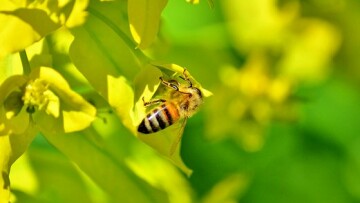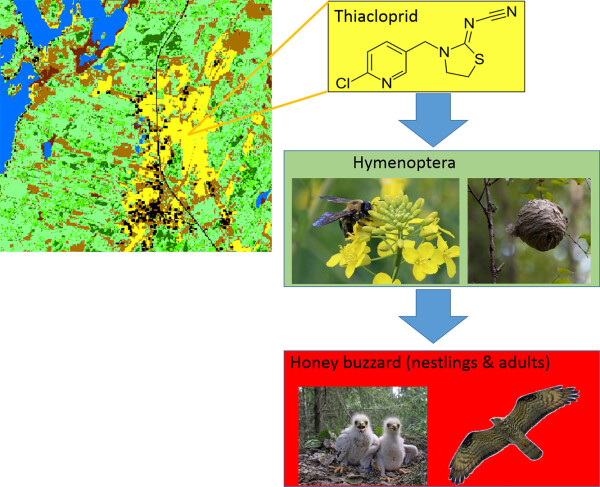First evidence of neonicotinoid residues in a long-distance migratory raptor, the European honey buz

Highlights
• We studied the prevalence of neonicotinoids in a migrant raptor, the honey buzzard.
• Residues of neonicotinoids were present in the majority of blood samples.
• In blood, thiacloprid was the most prevalent of neonicotinoid compounds.
• Presence of oil plants at foraging distances matched with neonicotinoid presence.
• We suggest more investigations of neonicotinoid presence on top of the food chain.
The evidence of negative impacts of agricultural pesticides on non-target organisms is constantly growing.
One of the most widely used group of pesticides are neonicotinoids, used in treatments of various plants, e.g. oilseed crops, corn and apples, to prevent crop damage by agricultural insect pests.
Treatment effects have been found to spill over to non-target insects, such as bees, and more recently also to other animal groups, among them passerine birds. Very little is known, however, on the presence of neonicotinoids in other wild species at higher trophic levels.
We present results on the presence of neonicotinoid residues in blood samples of a long-distant migratory food-specialist raptor, the European honey buzzard. Further, we investigate the spatial relationship between neonicotinoid residue prevalence in honey buzzards with that of crop fields where neonicotinoids are typically used. A majority of all blood samples contained neonicotinoids, thiacloprid accounting for most of the prevalence.
While neonicotinoid residues were detected in both adults and nestlings, the methodological limit of quantification was exceeded only in nestlings. Neonicotinoids were present in all sampled nests. Neonicotinoid presence in honey buzzard nestlings' blood matched spatially with the presence of oilseed plant fields. These are the first observations of neonicotinoids in a diurnal raptor. For better understanding the potential negative sub-lethal of neonicotinoids in wild vertebrates, new (experimental) studies are needed.
Full version (open access) of Science of The Total Environment Volume 639, 15 October 2018, Pages 929-933 available at: https://www.sciencedirect.com/science/article/pii/S0048969718318345?via%3Dihub
